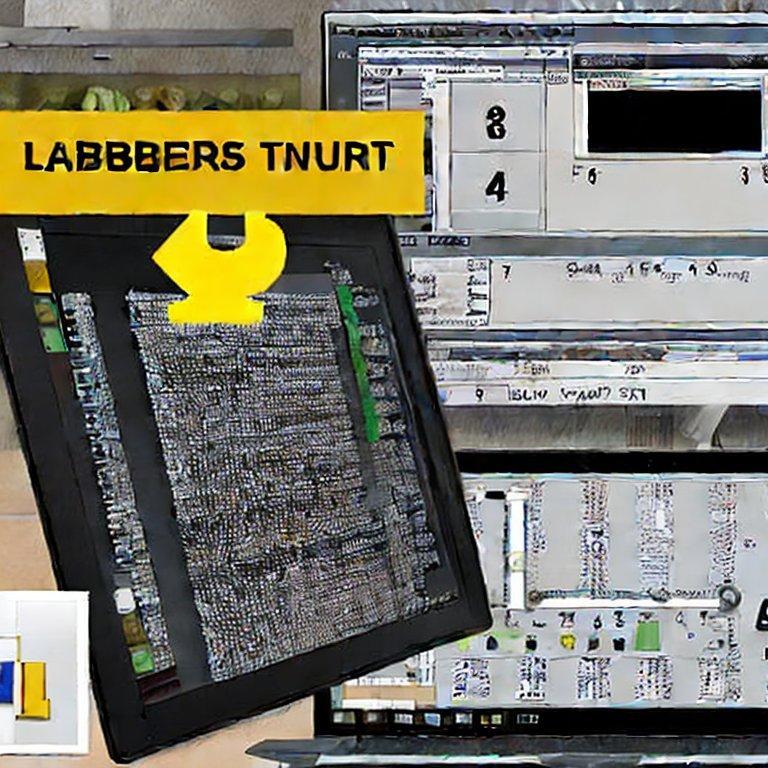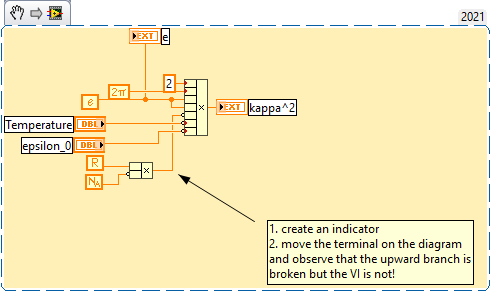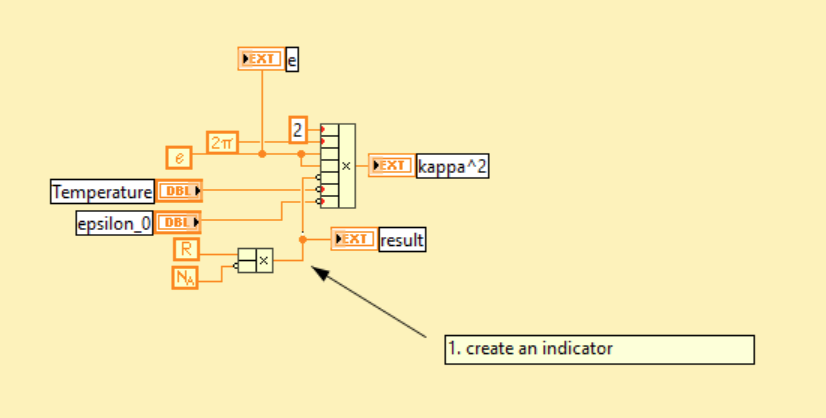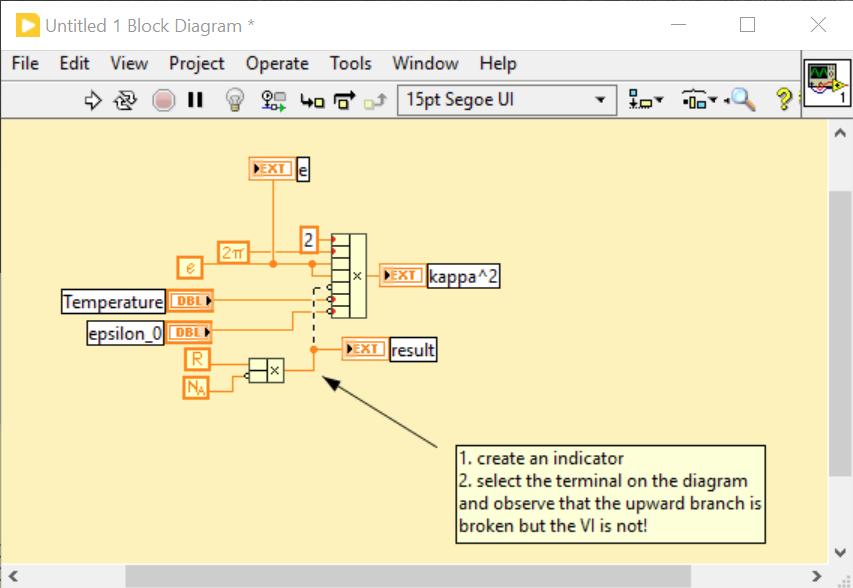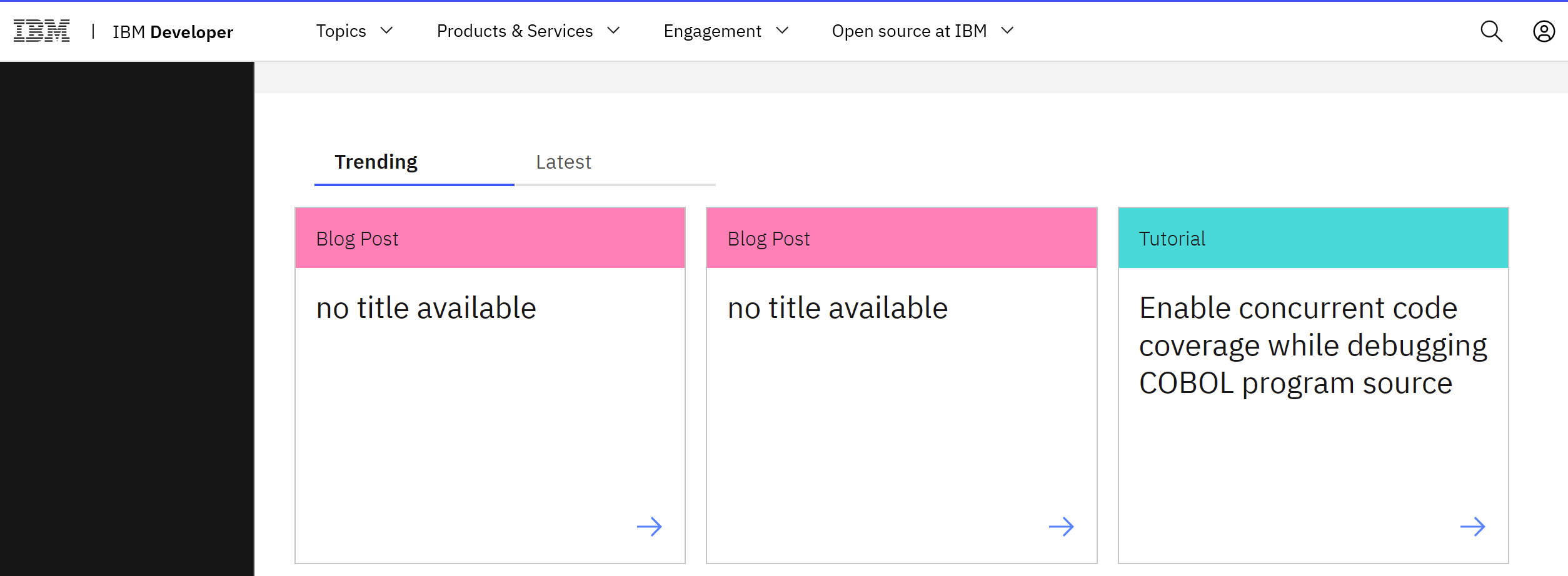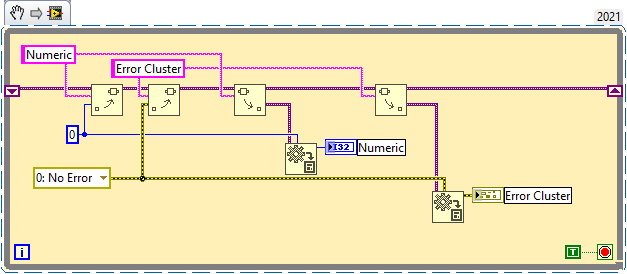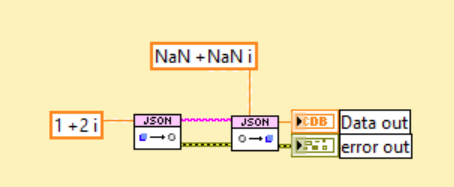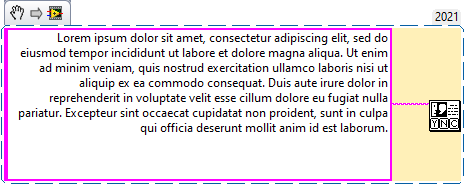-
Posts
440 -
Joined
-
Days Won
29
Content Type
Profiles
Forums
Downloads
Gallery
Everything posted by X___
-

Optimization of reshape 1d array to 4 2d arrays function
X___ replied to Bruniii's topic in LabVIEW General
Try decimate array? -

Project Dependencies, 'Find Items Incorrectly Claimed by a Library'
X___ replied to MartinMcD's topic in LabVIEW General
This actually doesn't work as a general solution (one exception is enough to invalidate the rule, and I just experienced it). However, as stated before, I believe that as long as they don't break the code, LabVIEW's compiler hallucinations can be ignored. -
LabVIEW's motto: Move slowly and break things!
-
Another example of tricks with units. The above formula works fine. If I want to check the value of the Boltzmann constant by adding an indicator where indicated: Things look fine but they are not: tested in LV 2021 SP1 64 bit
-
I date back from the pica.army.mil email list but never used Usenet. I am so not anonymous that I had a bunch of members of that mailing list drop by in one of my old labs say hi and gift me with a NI screw driver (this was back in the day where NI was gifting their users with goodies and trying to cultivate their relations with universities, just to give an idea of how far back I am talking about). I was already pestering about LabVIEW shortcomings (to my defense, that was pre-undo). Nothing changes...
-

Failure to run a LabVIEW 2021 standalone app on macOS Monterey
X___ replied to X___'s topic in Apple Macintosh
I am not sure I get it. What is that "post-processing VI" you are talking about?- 10 replies
-
- appbuilder
- labview 2021
-
(and 1 more)
Tagged with:
-
-

Issues building applications in LabVIEW 2023 Q3
X___ replied to Mads's topic in Development Environment (IDE)
So it is the new way to not release any info whatsoever ("NI did not create this content for this release") on new releases? I did not see any beta forum either during that all time. This is important to me, as I need to find funding for migrating my code base to a new environment, and any official evidence that NI/Emerson has dropped the ball to a new low (if I can forge this hybrid expression for the occasion) is useful. -
Check this thread though: I wasn't able to take advantage of any multicore speed up and as for many NI toolkits, documentation is aspirational.
-
I think it is actually more trivial: the behavior I was observing is indeed related to an ancillary window opening, but that was triggered by a user-selected menu item. If I programmatically open the window, the "Mouse Leave" event doesn't appear to be fired (as expected). In fact, going to the menu bar triggers a "Mouse Leave" event. Why not. However, for some reason, the "Mouse Enter" event is not fired if the selected menu item is actually inside the window (which is almost always the case). This is what got me confused (or rather my code). So I guess my question is thus: why is the Mouse Enter event not fired when the user releases the mouse button after having selected a menu item?
-
It's a very dead thread but it's the one I found when trying to figure out why a "VI Mouse Leave" event is fired when I open another VI programmatically even when not activating that VI. Since that has been suggested as being the source of the OP's problem (but then NI suggested it was a bug with the Abort method), I am wondering whether this is expected behavior or a bug (which would then still be alive in 2021 SP1 which I am currently using). If this is a feature, I am trying to understand the logic: a VI is opened and set to not be inactive, yet the Mouse is supposed to have magically moved to that VI's front panel, even if it is nowhere close to it?
-
As mentioned earlier, I have happily left the Apple eco-system at the end of 2020, but one of my users is a die-hard macOS fan and has decided to try running my 2021 SP1 64 bit executable on a M1 MBP running Parallels Desktop 18 (Windows 11 VM). The code looks like it works fine, until some weird differences with the native Windows app start popping up. For instance, a variable loaded from an XML file is internally converted to a value that is ever so slightly different than the one it adopts on a PC (as seen in a printout of the value converted to ASCII). In an another instance, the comparison of two floating point values, loaded from two different files, which "passes" a preset criterion on PCs, fails the test on the VM... I don't see that there is any way to easily predict this type of problems and foolproof the code against them, so I believe I will just not recommend trying to use Parallels Desktop VMs to use my code on a Mac.
-
-
I have given up on using complex numbers in JSONtext after discovering this problem, so I am fine with either way but if there was a way to throw an error for unsupported types, this could prevent people like me from building on sand (of course I should have more testing of my code, but I am a one man orchestra, so that is not always an option). Note: the last point appears somewhat related to this issue: https://bitbucket.org/drjdpowell/jsontext/issues/108/from-json-textvim-does-not-return-an-error
-
-
[Bug Report/Feature Request] The following diagram is self-explanatory: It returns an error 402843: JSONtext.lvlib:Scalar JSON text to Variant (not inlined).vi:5750001<ERR> Unhandled Type: "Double Complex" At least it does return an error. When the complex numbers are within an array inside a cluster, the corresponding data is ignored and the default (empty array) is returned instead without any error. Note that the To JSON text.vim doesn't complain and outputs the expected "1 +2 i" string.
-
For context, I should have mentioned that the reason my account was not associated with an active subscription license is because my college admin hasn't found the patience to fight with NI to get it re-activated properly. I suspect they will eventually give up (and that I am the only one still using LabVIEW in my Department, or others just reverted to the community edition). As a result, we haven't got an active license for that reason for a couple of years (not that I would have ventured into committing to newer subscription-only versions). As explained elsewhere, I had to personally take care of making sure our years of continuous subscription (or rather permanent license) was not wiped out in the process. It actually was, because of the failure to renew our license, so NI had to create a NEW permanent license number of 2021 and earlier. Yet, there is apparently no way for it to be stored on NI's web servers or associated with my account... I consider myself lucky to have been able to reach a capable employee who managed to verify that the information I was providing was correct and went the extra length to share a private link to an installer (first a web installer, and next, after I told him than not all machines are internet connected, a downloadable installer). I wouldn't be this will last.
- 28 replies
-
- labview2017sp1
- labview rt
-
(and 3 more)
Tagged with:
-
Similar story here. A hardware vendor suggested I tried the 32-bit version of LabVIEW to figure out a problem I had encountered. I went to the website to download the installer of my permanent license LabVIEW 2021, only to be greeted with grayed out download links and a message according to which: It turns out there is no way to update any service information, so I called NI tech support and magically got someone to pick up the phone right away, listen to my description of the situation and after verification, offer to send me a link to the installer download. I am still fighting with Microsoft OneDrive to get to that installer download, but the bottom line is that NI Emulsion is apparently willing to waste the time of their tech support employees to access software installer that they were entitled to according to the initial term of their license. Until they won't?
- 28 replies
-
- labview2017sp1
- labview rt
-
(and 3 more)
Tagged with:
-
I confirm. Thanks.
-
Any update on this bug? I can't figure how to check the status on the Emulsion website.
-

Three Button Dialog truncates message or adds "Standard" at the end
X___ replied to X___'s topic in LabVIEW Bugs
Thanks for the feedback Looking into the code of the Three Button Dialog Core.vi, I found a conditional case structure messing up with the displayed string which I must have added in a late night debugging session and forgotten about. Disabling it restored the expected behavior. For a while I thought that LabVIEW had been spooked... -
We need to be realistic and pragmatic.

